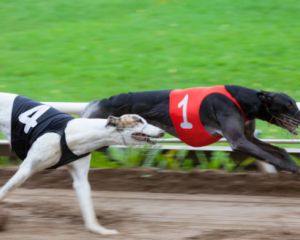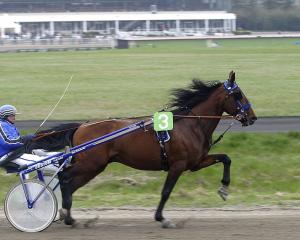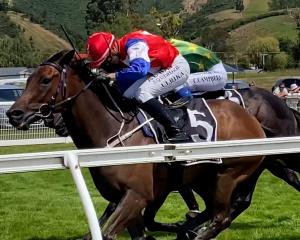On Sunday the nation’s harness racing interests will turn to Oamaru for the 2017 edition of the Hannon Memorial, writes Jonny Turner.
A landmark race that is steeped in tradition, it is Otago’s most prestigious, long-lasting and influential harness race, especially considering its reputation as a lead-up to the New Zealand Cup. A look back over the past five decades shows the Hannon has also been the subject of much change.
Turn back to 1967 and you will find the race was a $2400 standing-start handicap run over just 2000m — a long way from today’s $25,000 event over 2600m.
Another key point of difference is that then it was run on Oamaru’s grass track. And it was run on Labour day, timing that is still regarded as the perfect modern lead-up to the New Zealand Cup.
That was the case for 1967 New Zealand Cup favourite Happy Ending. After his runner-up effort in the Hannon, he did not step out again until taking to Addington, with legend Cecil Devine in the sulky, for the cup, against eight of his Hannon rivals.
While the Labour Weekend timing of a horse’s final run before the cup has not changed, their preparations have. The Hannon was Happy Ending’s eighth run of his campaign, which started in early August. The race has now effectively flipped from a traditional last hit-out for cup prospects into the first or second run of their campaigns.
Of course, a change to a date later than September would impact on that, but even allowing for the change, Happy Ending would still have had six pre-cup races if the Hannon was run in its modern September timeslot.
In 1977, the Hannon again produced what would be the New Zealand Cup favourite when Balgove ran third in the hands of Robert Cameron.
It was Balgove’s sixth race of his cup preparation — or fifth if it was run in its modern September timeslot.
By then, the Hannon had increased in both prizemoney and distance to a $4500 handicap over 2600m. Balgove did not have another race until running fourth in the cup alongside just three other Hannon runners. Wee Win was the best of them home, improving from eighth in the Hannon to run third in the cup.
By 1987, the Hannon had transformed into a $20,000 group 3 handicap. Its 2600m distance was now well established, but the grass track was long gone and the race was run on Oamaru’s all-weather track.
Yet again, the Labour Day timing of the race proved perfect as the winner, Sossy, would head straight into the New Zealand Cup in which he would run fourth.The Hannon was the eighth race of the horse’s campaign, and the last before his cup appearance.
By 1997, there were major changes to the Hannon, not all for the good. The stake had dropped to $12,000 and the date had moved to late September, where it has remained. Why the change? That is a question best directed at Harness Racing New Zealand which shoved Oamaru off its Labour Day date and handed it to Ashburton to run its Flying Stakes.
Locals I have spoken to said there was little in the way of negotiation or reasoning behind it; they were simply told the date was not there anymore.
It is hard not to feel this move is a loss for the little guys. A club which had a race steeped in tradition was seemingly robbed.
1997 brought good news, though, as one of the brightest stars, Iraklis, showed Oamaru his brilliance. He duly won the New Zealand Cup as favourite. His preparation was typical of that of the modern standardbred; the Hannon, in its September slot, was the third of just four races Iraklis had under master trainer Robert Cameron before his cup win.
Unlike the cup horses of decades ago who had to be racing by early August, Iraklis started his campaign in September and was one of four horses to go from the Hannon on to the cup.
In 2007, the Hannon again produced the cup winner as rugged former Aussie Flashing Red used the race as a stepping stone to cup glory.
The Hannon distance was unchanged at 2600m, but its prizemoney had bounced back to $30,000.
The pacer, who was almost a throwback to the horses of yesteryear, had raced through the winter in Australia and the Hannon was the sixth run of his campaign. He ran third. Now, it seems the Flashing Reds have long gone. Rather than durable types, you will see the more refined, athletic standardbred.
Whether there is a New Zealand Cup winner in this year’s Hannon is yet to be seen, but we already know there are some genuine contenders.
Titan Banner heads the list and should be very hard to beat on Sunday.I’m looking forward to seeing the race. Happy trails.















